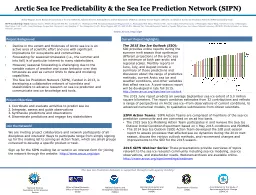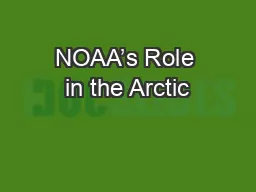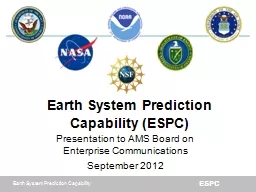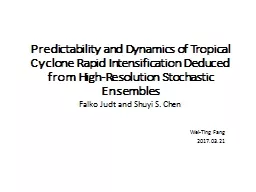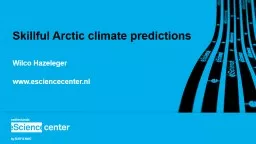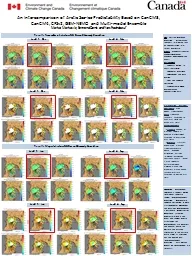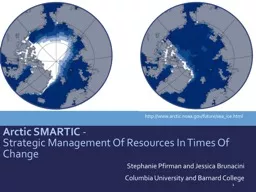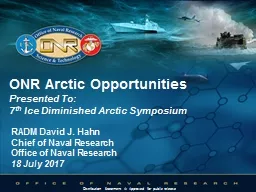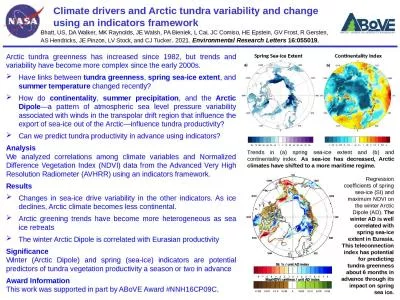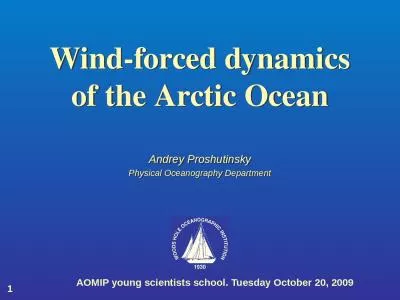PPT-Arctic Sea Ice Predictability & the Sea Ice Prediction
Author : tawny-fly | Published Date : 2015-09-20
Decline in the extent and thickness of Arctic sea ice is an active area of scientific effort and one with significant implications for ecosystems and communities
Presentation Embed Code
Download Presentation
Download Presentation The PPT/PDF document "Arctic Sea Ice Predictability & the ..." is the property of its rightful owner. Permission is granted to download and print the materials on this website for personal, non-commercial use only, and to display it on your personal computer provided you do not modify the materials and that you retain all copyright notices contained in the materials. By downloading content from our website, you accept the terms of this agreement.
Arctic Sea Ice Predictability & the Sea Ice Prediction: Transcript
Download Rules Of Document
"Arctic Sea Ice Predictability & the Sea Ice Prediction"The content belongs to its owner. You may download and print it for personal use, without modification, and keep all copyright notices. By downloading, you agree to these terms.
Related Documents

